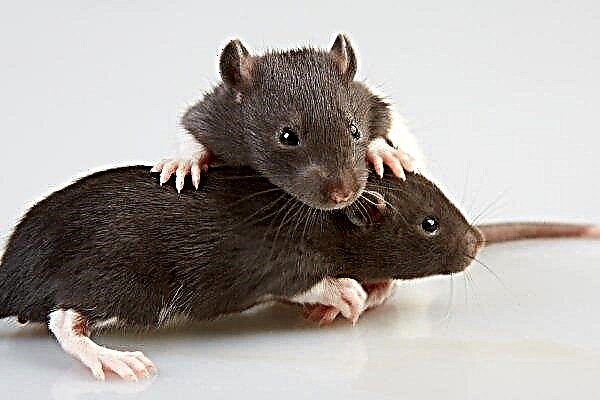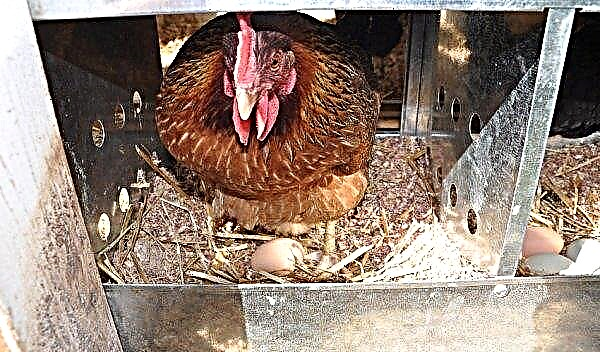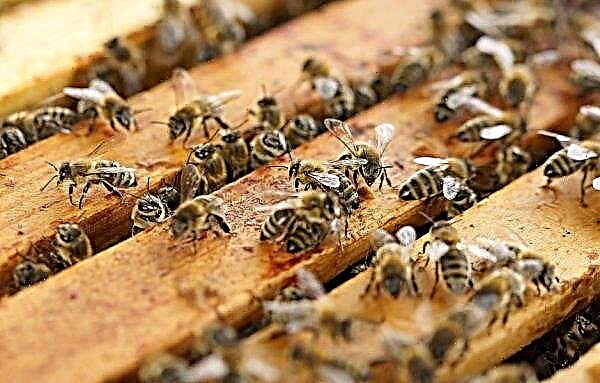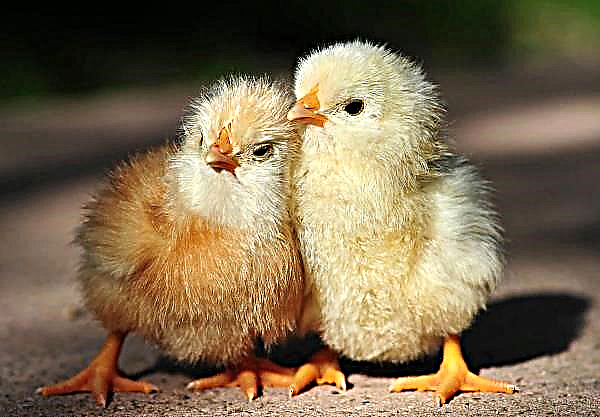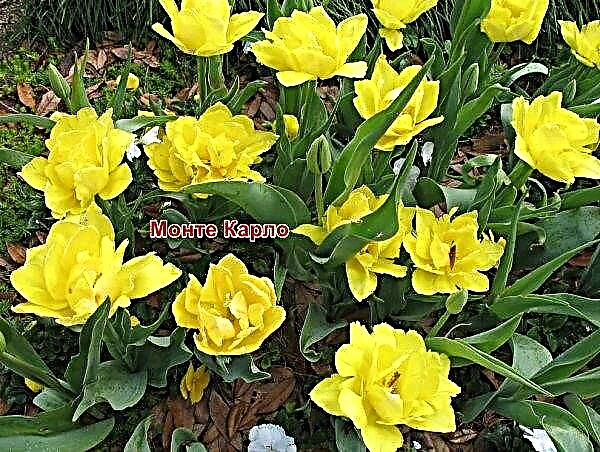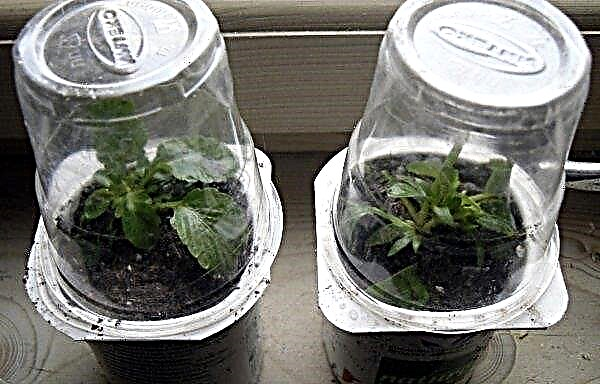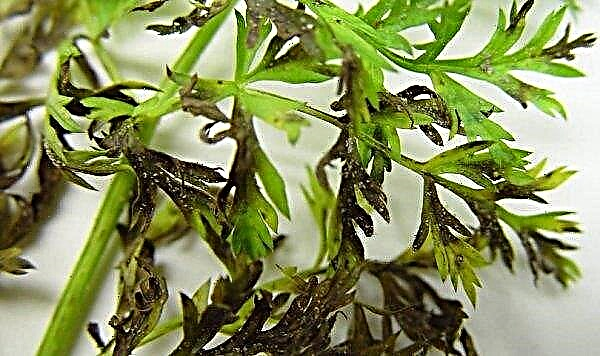When growing spathiphyllum, plant breeders often encounter the problem of darkening leaf plates in plants. The most common cause of this deviation is improper care. Read on how to sort out the symptoms and correct the situation.
The basic rules for growing spathiphyllum
Rules for the care of spathiphyllum:
- Location and lighting - It develops equally well with plentiful diffused lighting and slight shading. It grows best on the western and eastern windowsills.
- Temperature mode - +16 ... + 25 ° С.
- Humidity - 80% in the summer, 60% in the winter.
- Watering - plentiful in the warm season, moderate in winter.
- The soil - peat, leaf-sod land, crushed moss sphagnum, sand, hydrogel in granules, sand. All components are mixed in the same ratio, with the exception of leaf-sod land. Its percentage in the substrate for spathiphyllum should reach up to 50% of the total mass.
- Fertilizers - 2 times a month during the growing season, 1 time per month in the winter. The plant develops well when alternating organics and mineral complexes for flowering representatives of the flora.
- Transfer - for young plants is carried out annually by the transshipment method, for adults - once every 2 years.
Why the leaves of spathiphyllum turn black: how to save the plant?
The main reasons explaining why the leaves of spathiphyllum darken are associated with improper care and are:
- violation of humidity;
- lack of trace elements;
- wrong location.

Excess or moisture deficit
Spathiphyllum is very demanding on humidity. With low soil moisture and the environment, the ends of the leaves fade and then dry. In this case, the solution to the problem is to remove dead foliage and resume proper watering. With increased soil moisture in combination with a low ambient temperature, the tips of the leaves become darker than the bulk, and signs of decay of plant tissue are clearly visible. In this case, it is more difficult to correct the situation, since the process of decay affects the root system.
An urgent transplant is needed with a complete replacement of an earthen coma:
- Prepare a new pot of the same volume as the old.
- Disinfect the new container with Furatsilin solution - dissolve 1 tablet in 50 ml of boiling water.
- Remove the plant from the old tank, free the roots from the ground, rinsing under running water.
- Remove rotten areas with a sharp scalpel disinfected with alcohol.
- Immerse the roots for 10 minutes in the “Fundazole” solution (5 g of the substance per 250 ml of water).
- hours, hold the plant on a paper towel to dry the roots.
- Powder the roots with charcoal.
- Place a claydite drainage at the bottom of the pot, and then a layer of new soil, the moisture content of which varies between 40–50%.
- Arrange the plant in a pot, aligning it with the root neck, and sprinkle the soil with voids.
 After this manipulation, the first watering can be done a week later, using the “Fundazole” solution to prevent re-infection. A week after watering, you can spray with foliar mineral dressing containing potassium and phosphorus. In the next dressing, you need to add 5 g of dolomite flour under the root to enrich it with calcium. Further care is carried out according to the standard scheme.
After this manipulation, the first watering can be done a week later, using the “Fundazole” solution to prevent re-infection. A week after watering, you can spray with foliar mineral dressing containing potassium and phosphorus. In the next dressing, you need to add 5 g of dolomite flour under the root to enrich it with calcium. Further care is carried out according to the standard scheme.Important! Plastic has the ability to retain moisture, so it is better to abandon the planting of spathiphyllum in containers made of this material. More suitable option — ceramic pot.
Lack of useful components in the ground
Understanding exactly which trace element does not reach the spathiphyllum will help assess its appearance:
- outwardly healthy plant does not form flowers with lush greenery - lack of potassium and phosphorus or an excess of nitrogen;
- small pale foliage - complete depletion (it is better to transplant plants into a new nutrient soil with the addition of superphosphate);
- stunting, wilted flowers - deficiency of magnesium;
- leaves drying at the edges with multiple black dots in the central part - an excess of fertilizer.
After assessing the condition of the plants, you need to purchase the fertilizer that is most suitable in composition and contains the missing element in the maximum amount. If there is a surplus of fertilizers, an urgent transplant will be required with the replacement of an earthen coma, washing the roots and removing burnt sites.
Wrong place choice
When placing plants in the northern part of the house, fading of foliage is observed. The situation is quickly corrected by a change in location and additional lighting. When growing spathiphyllum, it is also worth considering that the plant does not enter the dormant phase in winter, so it is better to rearrange it for the cold period to the southern window or provide additional lighting using phytolamps.
Important! For the full development of leaf plates, the spathiphyllum needs a narrow beam of light that hits it from above, so choose a lamp with a light angle of 60–80°.
Poor irrigation water quality
Watering with poor-quality water can also cause dark spots on the leaves. For irrigation, do not use non-settled water. Water can be softened not only by settling, but also by freezing. The freezing rate of pure water differs from that for saline, so the bottom layer of water that will remain when the bulk is frozen needs to be drained. After defrosting, melt water must be heated to a temperature of + 20 ° C and only then used for irrigation. An easier way to soften water is to add 3 g of wood ash for every liter of liquid. The second method is suitable only for soil with optimal acidity.
After defrosting, melt water must be heated to a temperature of + 20 ° C and only then used for irrigation. An easier way to soften water is to add 3 g of wood ash for every liter of liquid. The second method is suitable only for soil with optimal acidity.
What can I do to prevent spathiphyllum leaves from getting dark?
Preventive measures that prevent the change of leaf pigmentation:
- watering in the summer after drying of the top soil layer 3 cm in depth, in the winter - once every 7-10 days;
- spraying at air temperature + 25 ° С - 2 times a week, at air temperature + 16 ° С - it is better to refuse spraying in favor of wiping the leaves with a wet swab;
- during the summer schedule of feeding, organic matter should be applied at the root, and mineral complexes - by spraying;
- conducting preventive spraying with Fundazolum once every 3 months;
- timely plant transplantation.
Did you know? In plants of the Aroid family, in taboutincluding spathiphyllum, respiration in plant cells is much faster than in other plants, which contributes to the release of heat into the surrounding atmosphere. For example, in flowering philodendron, the difference in temperature emitted by it and the environment can be up to +40° C.
Useful Care Tips
A few helpful recommendations for growing spathiphyllum:
- When choosing a place for a plant, avoid drafts.
- To increase the endurance of the flower, transfer it to a balcony or garden for a warm period.
- Do not change the location of the plant too often, especially during flowering.
- When choosing a spathiphyllum in a store, give preference to hybrid varieties - they bloom all year round.
- If you have an aquarium with fish at home, you can periodically use the spent liquid to water the plant, having previously filtered it through gauze.
- When a whitish coating appears on the surface of the soil, add 3 drops of lemon juice or oxalic acid to the water for irrigation.
 Darkening of the leaves of spathiphyllum indicates deficiencies in care associated with plant nutrition, as well as water quality and moisture conditions. Almost all errors are easily corrected, but still it is better to try to avoid them.
Darkening of the leaves of spathiphyllum indicates deficiencies in care associated with plant nutrition, as well as water quality and moisture conditions. Almost all errors are easily corrected, but still it is better to try to avoid them.

